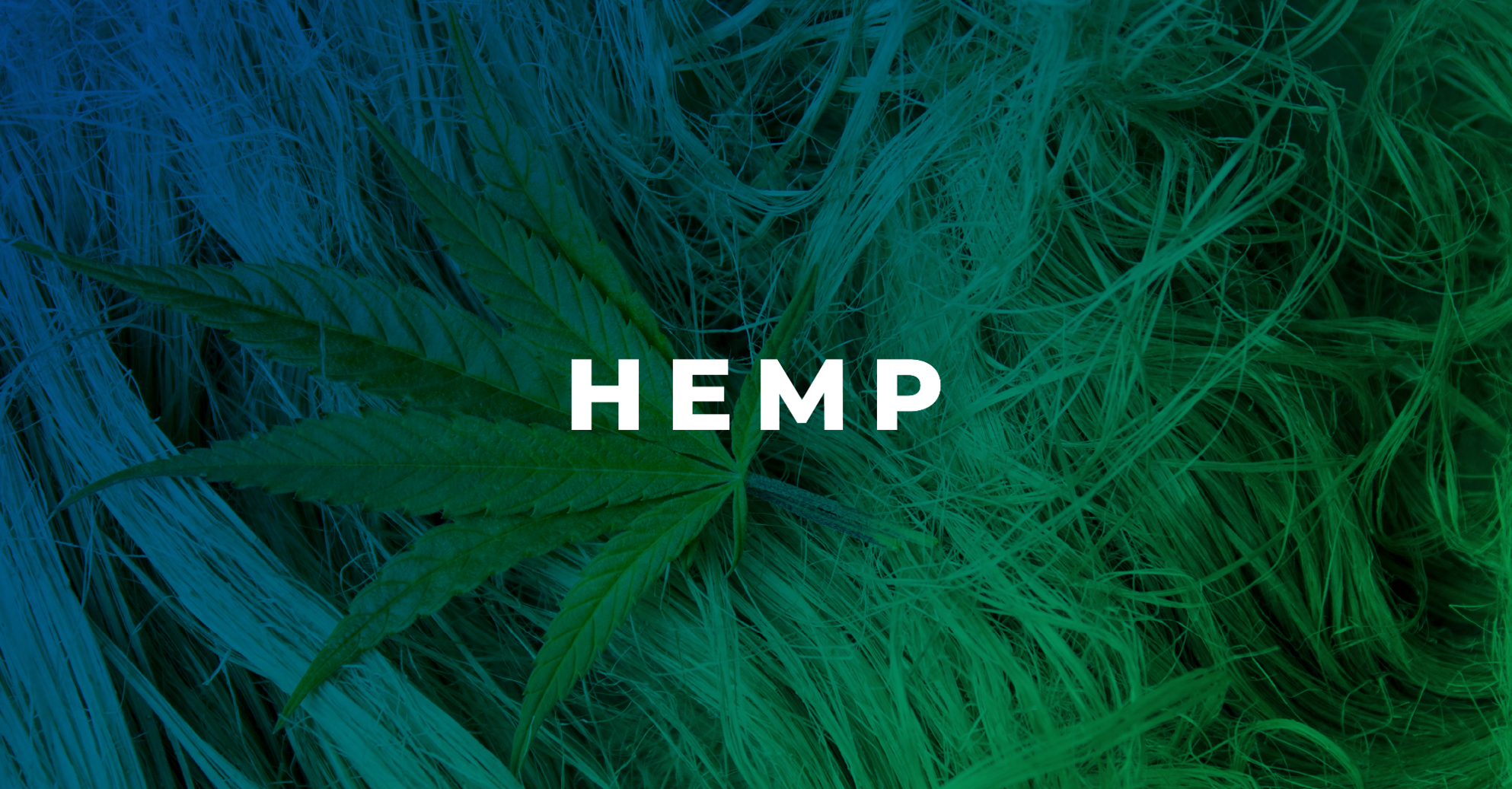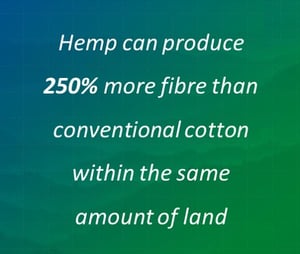
Continuing our discussion on raw materials and their sustainability, in today’s blog we take a closer look at Hemp. This fast-growing, versatile plant has been around a long time, and has a variety of industrial & consumer uses.
The History of Hemp
It may seem like hemp is a brand new discovery spreading throughout the sustainability world but in reality, this green plant has been used for a long time. Evidence of hemp use dates back to 50,000 years ago, and has been found in rope, food, textiles, paper, medicine, and more. Despite having a long history, hemp has only recently found its way back into production.
In the early 1900’s, hemp production was becoming easier and more efficient, and its benefits were gaining attention. Paper, petroleum, and pharmaceutical companies recognized the threat that hemp posed, and they started getting involved. Then in the 1930’s, the stories of “evil” marijuana began to spread, and hemp took a major hit. Due to the similar leaf shape, hemp is often confused with marijuana. While they do have some familial connection (they’re both “cannabis” plants), hemp contains no THC (the active ingredient that leads to a “high” from marijuana). After push back in recent years, industrial farmers started growing hemp again.
How is Hemp Sustainable?
More crop production in less land
 Hemp grows in a variety of climates and soil types and it can also grow extremely close together. This means that less land is needed to produce more material–hemp can produce 250% more fibre than conventional cotton within the same amount of land.
Hemp grows in a variety of climates and soil types and it can also grow extremely close together. This means that less land is needed to produce more material–hemp can produce 250% more fibre than conventional cotton within the same amount of land.
Plus, hemp grows super quickly, resulting in more yields per acre. The average tree takes about 10 years to grow to maturity, while hemp can take as little as 3 months to be ready to harvest. Economically and environmentally speaking; it’s a win-win; use up less land, and get more of a result, quicker. Hemp can produce 250% more fibre than conventional cotton within the same amount of land.
Easy farming
When farmers plant hemp, they reap more than a great harvest. Hemp grows like a weed and therefore it literally takes up so much sunlight that actual weeds hardly ever crop up. While it grows, it replenishes the soil with nitrogen and other nutrients, while removing toxic chemicals at the same time using a process called phyto-remediation. Because of its ability to replenish the soil as it grows, farmers can plant hemp year after year.
No need for pesticides or herbicides
Because the hemp plant is so durable, it doesn’t need any pesticides or herbicides to help it out. This reduces farmers’ exposure to harmful chemicals, meaning it’s safe for you to wear, dogs to chew on, and kids to play with. Hemp naturally comes in a variety of colours, and can be dyed with nontoxic, soy based inks that hold colour extremely well, reducing the need for chemical heavy inks and dyes. Strong natural hemp material often lasts longer than cotton, but once a hemp product finally runs its course, it’s 100% biodegradable.
Needs less water
Conventional cotton is highly water intensive. It takes less than half of that amount of water to produce the same amount of hemp. Hemp is an alternative for areas that are experiencing water shortages.
Hemp products
There’s a million ways to utilize the hemp plant in a sustainable way. One of the most common uses for hemp, however, is to create comfortable, durable fabric. Hemp one of the most high-quality, low-impact textiles on the market today. It’s naturally hypo-allergenic, bacteria-resistant, and anti-mildew, making it a great choice for sensitive skin. With a similar feel to linen, hemp is perfect for warm weather with its breathable, moisture wicking qualities. As a UV-resistant fabric, hemp will protect your skin from the sun all day long. Plus, it softens with each wash.
Over time, the use of industrial hemp has evolved into an even greater variety of products, including health foods, organic body care, clothing, construction materials, bio fuels, plastic composites and more (according to one source, more than 25,000 products can be made from hemp).
Some examples of hemp products are:
- Beer
- Sunscreen
- Shoes
- Rope
- Clothes
- Soap
- Hempcrete (building material)
- Paper
- Protein Powder
- Diapers
- Fuel
Do you want to learn more about sustainable materials and generate ideas to create more environmentally friendly marketing campaigns? ASL's experts are on hand to provide guidance and support. Why not book a free Sustainability Workshop for your marketing team - we will build a bespoke, interactive workshop session tailored specifically to your brand, delivered in person or online, as required.
Contact us to book your Sustainability Workshop today
ASL Global is committed to conducting our business in a responsible & sustainable way. Acting with passion and integrity, our people work with customers, suppliers and other stakeholders to make a positive contribution to social responsibility and environmental sustainability in communities around the world.

Discover more about our ONE WORLD initiative







